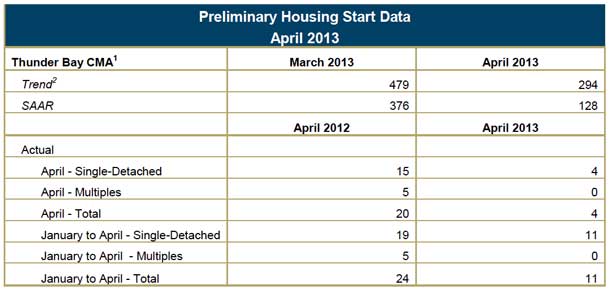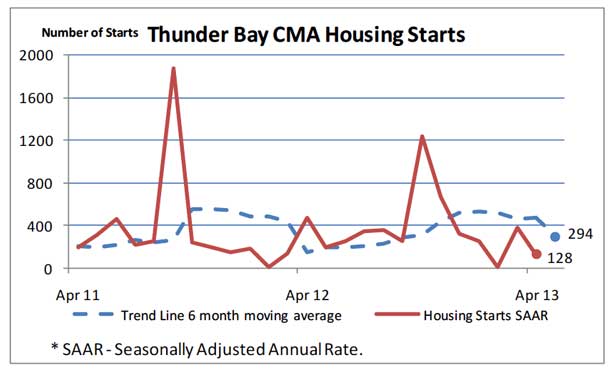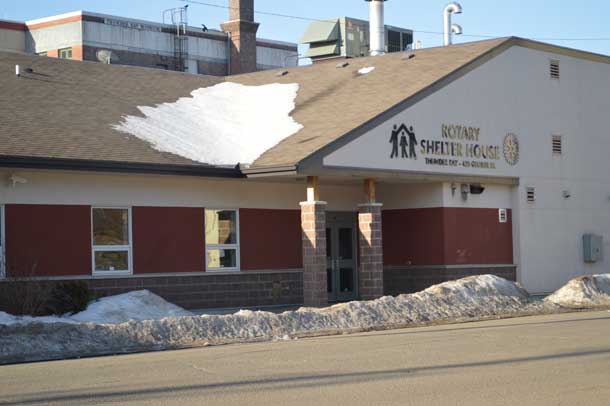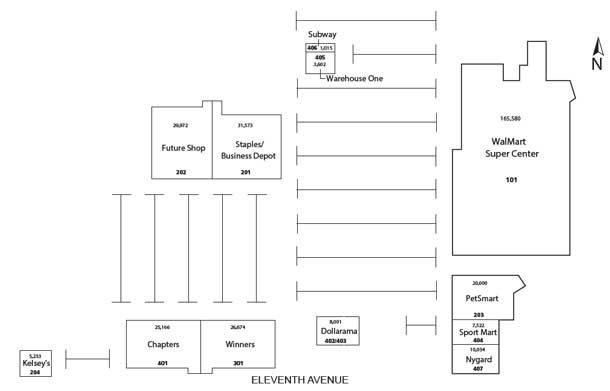 THUNDER BAY – Housing prices in Thunder Bay are leading the country. Part of that is a growing market, and part of that is a shortage of new homes. April’s long hanging winter weather is seen as a cause for slower housing starts.
THUNDER BAY – Housing prices in Thunder Bay are leading the country. Part of that is a growing market, and part of that is a shortage of new homes. April’s long hanging winter weather is seen as a cause for slower housing starts.
“Housing starts in Thunder Bay, Census Metropolitan Area (CMA) were trending at 294 units in April compared to 479 in March”, according to Canada Mortgage and Housing Corporation (CMHC). “The trend is a six month moving average of the monthly seasonally adjusted annual rates of housing starts”.

The Conference Board of Canada, in April listed Thunder Bay in the ‘gainers’ listing. The report listed Thunder Bay — along with Calgary, Regina, Saskatoon, Halifax and Newfoundland — in the “seven per cent plus range for average year-over-year price growth for the latest three months”.
While the numbers appear positive, there is a real shortage of housing in the city. Rental prices are climbing as a result of the marketplace not having enough homes. With the City of Thunder Bay looking to get out of the Royal Edward Arms, there will be an additional 60 plus people added to the 1200 person waiting list for lower income rental housing in the city.
The evidence of the shortage can be noted by the added pressure on Shelter House, where the facility if full most nights, and actually turning away people.

“Home building slipped in April, as winter did not relinquish its grip on Northwestern Ontario. The delayed start to the new home construction season should not affect the forecast numbers for 2013. Given the tight resale market and improved employment prospects, CMHC’s forecast is expected to be on par with 2012,” said Warren Philp, CMHC’s Market Analyst for Thunder Bay.
The commercial market in the city is interesting. RioCan Real Estate Trust reported on May 3rd, 2013, “RioCan completed the disposition of RioCan Centre Thunder Bay, a 334,000 square foot retail centre located in Thunder Bay, Ontario, at a sales price of $62.8 million. The property had approximately $11 million of debt associated with it at the time of sale, which was assumed by the purchaser”.

There are many commercial properties being purchased in the city.
CMHC uses the trend measure as a complement to the monthly SAAR of housing starts to account for considerable swings in monthly estimates and obtain a more complete picture of the state of the housing market. In some situations, analysing only SAAR data can be misleading in some markets, as they are largely driven by the multiples segment of the markets which can be quite variable from one month to the next.
The standalone monthly SAAR was 128 units in April, down over two hundred units from March.







